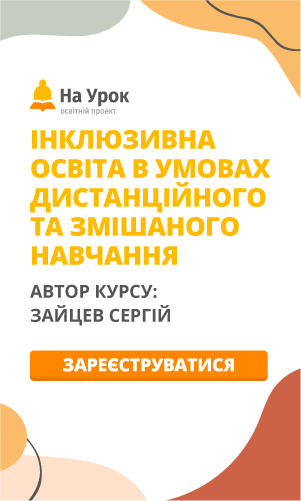11 клас_Контроль читання_2 семестр
FORM 11
READING COMPREHENSION
Task 1. Read the text below. For questions 1-6 choose the correct answer (A, B, C or D).
A BRIEF HISTORY OF CHOCOLATE
The tasty secret of the cacao tree, which chocolate is made from, was discovered 2,000 years ago in the tropical rainforests of the Americas.
The first people who made chocolate were the ancient cultures of Mexico and Central America. These people, including the Maya and Aztec, mixed ground cacao seeds with various spices to make a hot, bitter drink.
The drink was considered so precious that it was initially intended only for the most important people in society: rulers, priests, decorated soldiers and honoured merchants. Chocolate also played a special role in both Maya and Aztec royal and religious events: priests presented cacao seeds as offerings to the gods and served chocolate drinks during sacred ceremonies.
Europe’s first contact with chocolate came during the conquest of Mexico in 1521. The Spanish recognized the value attached to cacao and followed the Aztec custom of drinking chocolate. Soon afterwards, the Spanish began to transport cacao seeds back home. Slowly they started adding cinnamon and other spices to it and began sweetening it with sugar. They managed to keep their delicious drink a Spanish secret for almost 100 years before the rest of Europe discovered what they were missing. Sweetened chocolate soon became extremely popular.
Because cacao and sugar were expensive imports, only those with money could afford to drink chocolate. In fact, in France, chocolate was a state monopoly that could be consumed only by the aristocracy. Like the Maya and the Aztecs, Europeans developed their own special protocol for the drinking of chocolate. They even designed special porcelain and silver serving sets for chocolate that acted as symbols of wealth and power.
For centuries, chocolate remained a handmade luxury, drunk only by society’s upper classes. But by the 1800s, mass production had made it affordable to a much broader public: the steam engine made it possible to grind cacao and to produce large amounts of chocolate cheaply and quickly. Later inventions like the cocoa press made it possible to create smooth, creamy, solid chocolate for eating—not just liquid chocolate for drinking.
New processes and machinery have improved the quality of chocolate and the speed at which it can be produced. However, cacao farming itself remains basically unchanged. People grow cacao in equatorial climates all around the world today using traditional techniques first developed in Mesoamerica: cacao is still harvested, fermented, dried, cleaned, and roasted mostly by hand.
Today, additional steps in the processing of cacao have helped to create a variety of new flavours and forms. One thing has not changed, though: chocolate still remains people’s favourite sweet. As someone nicely put it: ‘I could give up chocolate but I’m not a quitter’.
1. Chocolate was discovered
A. during modern times.
B. almost a thousand years ago.
C. outside Mesoamerica.
D. by peoples living in rainforests.
2. During the Maya and Aztec civilisations, chocolate was
A. not given to everyone.
B. more important than religious events.
C. served with cinnamon.
D. served both as a sweet and a bitter drink.
3. In the hundred years after chocolate was taken to Spain
A. no changes were made to the customs.
B. it started to be eaten as well as drunk.
C. the Spanish exported it to Mexico.
D. they experimented with its flavour.
4. In Europe chocolate was at first only consumed by certain people because
A. it was expensive.
B. the flavour was unpopular.
C. all the aristocracy were in France.
D. it was difficult to transport.
5. New technologies have led to
A. a revolution in the way cacao is farmed.
B. chocolate becoming more easily available.
C. chocolate becoming more expensive.
D. chocolate no longer being available as a drink.
6. One thing about chocolate that hasn’t changed until today is that
A. there are as many flavours and forms as before.
B. more people give up on it more often.
C. it is loved by many.
D. it follows the same production process.
Task 2. Read the texts below. Match choices (A–H) to (7–12). There are two choices you do not need to use.
Winter Celebrations
7. Chinese New Year
Chinese New Year is the most important of the traditional Chinese holidays. It falls on different dates each year, between January 21 and February 20. Visits to friends and family take place during this celebration. Everything golden is said to bring wealth, and everything red is considered especially lucky.
8. Christmas
Christmas is the celebration of the birth of Jesus Christ. Around the world, family members help to decorate trees and homes with bright lights, wreaths, candles, holly, mistletoe, and ornaments. On Christmas Eve, many people go to church. Also on Christmas Eve, Santa comes from the North Pole in a sleigh to deliver gifts. In Hawaii, it is said he arrives by boat, in Australia, the jolly man arrives on water skis, and in Ghana, he comes out of the jungle.
9. Hanukkah
Jewish people celebrate Hanukkah, a holiday honoring the Maccabees victory over King Antiochus, who forbade Jews to practice their religion. For eight nights, Hanukkah is celebrated with prayer, the lighting of the menorah, and food. Children play games, sing songs, and exchange gifts. Potato pancakes, known as latkes in Yiddish, are traditionally served with applesauce or jam.
10. Kwanzaa
On December 26, Kwanzaa is celebrated. It is a holiday to commemorate African heritage. Kwanzaa lasts a week during which participants gather with family and friends to exchange gifts and to light a series of black, red, and green candles. These candles symbolize the seven basic merits of African American family life: unity, self-determination, collective work and responsibility, cooperative economics, purpose, creativity, and faith.
11. New Year’s Day
New Year’s Day, on January 1, is the first day of the year in the Gregorian calendar. There are often fireworks at midnight to celebrate the New Year. Commonly served in the southern part of the United States, peas are thought to bring luck for the New Year, and vegetables bring wealth.
12. Three Kings Day
At the end of the Twelve Days of Christmas comes a day called the Epiphany, or Three Kings Day. This holiday is celebrated as the day the three wise men first saw baby Jesus and brought him gifts. On this day in Spain, many children get their Christmas presents. In Puerto Rico, before children go to sleep on January 5, they leave a box with hay under their beds so the kings will leave good presents. In France, a delicious King cake is baked. Bakers will hide a coin, jewel or little toy inside it.
Which of the winter celebrations is associated with _____________ ?
|
7 |
|
|
8 |
|
|
9 |
|
|
10 |
|
|
11 |
|
|
12 |
|
A bonfires in the backyard
B honoring people’s main values
C an imaginary figure appearing in different ways
D a festive treat containing a surprise
E colours to make people fortunate
F sharing food with neighbours
G a special dish eaten with something sweet
H greens as symbols of riches


про публікацію авторської розробки
Додати розробку
